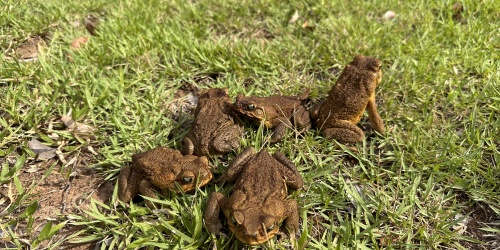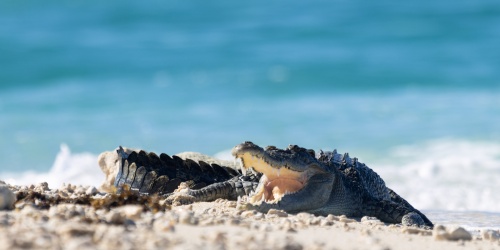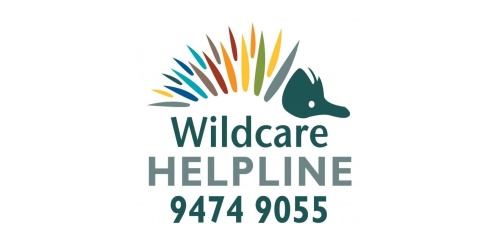Cane toads
Cane toads are an invasive species, threatening WA’s wildlife. Learn why cane toads are an issue for WA’s biodiversity and where they’re currently found in WA.
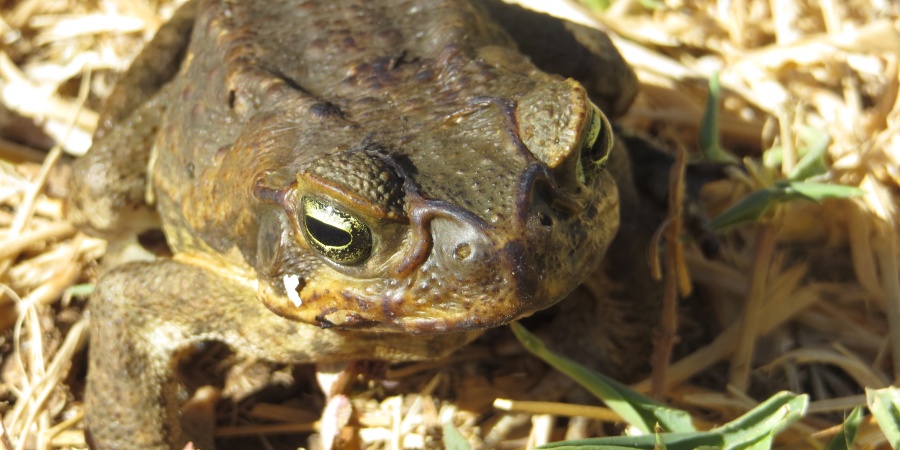
Cane toads are an invasive species introduced to Australia in 1935 in an attempt to control the cane beetle population, which was damaging sugar cane crops. However, the toads quickly became a problem, as they are toxic to many native predators and have few natural predators in Australia.
Cane toads have rapidly spread throughout much of northern and eastern Australia, out-competing native species for food and habitat and posing a threat to wildlife that prey on them, as the toxins in their skin can be deadly. Many frog-eating native animals, including snakes, lizards, and marsupials, have suffered declines in populations since the introduction of cane toads. For example, the northern quoll (Dasyurus hallucatus), an endangered species under the Biodiversity and Conservation Act 2016, is especially vulnerable to poisoning by toads.
Why cane toads are an issue for WA’s biodiversity
As cane toads arrive in new areas of WA, the impact can be disastrous to native species and their ecosystems.
Cane toads have a voracious appetite and can eat various foods in large quantities. This can include insects such as beetles, bugs, honey bees, ants, winged termites, crickets, small mammals, and smaller reptiles such as frogs, toads and snakes, depleting the food source for other animals. Native frogs are particularly vulnerable to the threat of cane toads as a food source for the toad and as a competitor for other food sources.
The impacts are also disastrous for large frog-eating native animals, such as freshwater crocodiles and the northern quoll, as they can substantially decline and even become locally extinct. These native animals are at the top of food webs in Western Australia, and their loss can cause imbalances in predator/prey relationships, causing a cascading effect on other native species, including uncontrolled population growth of prey species. This can ultimately impact the availability of food and habitat for other species, leading to alterations in the overall structure and function of the ecosystem. Protecting these species is, therefore, essential to maintain the health and balance of ecosystems in Western Australia.
Where are toads in WA?
The cane toad front advances at about 50km per year under natural dispersal patterns. The invading pioneers are generally large, long-legged, mostly male cane toads that invade new ground. Breeding toads follow six or twelve months after, and tadpoles and metamorph toads may be observed.
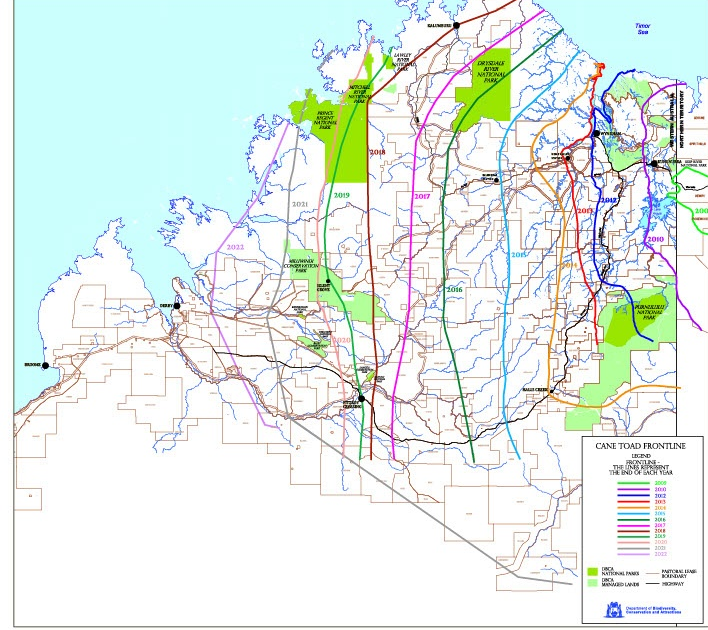
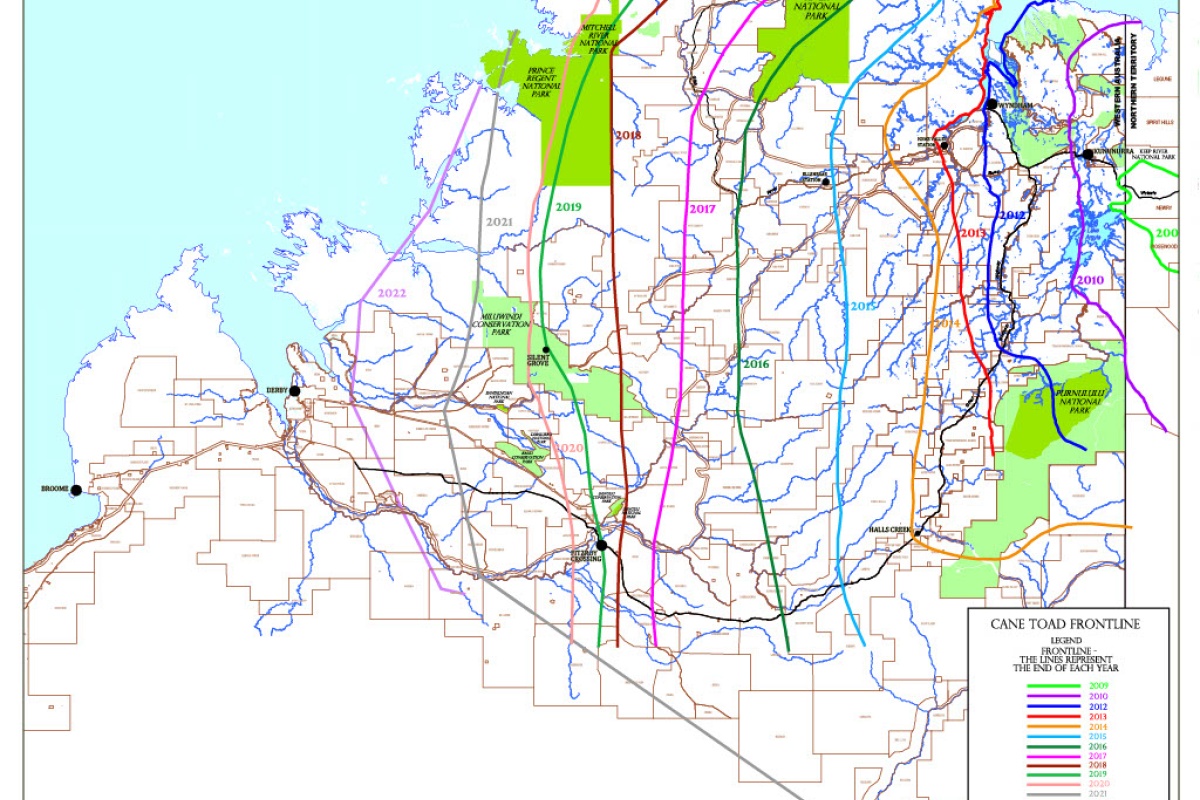
Cane toad management
To learn more about the work DBCA does on the Cane toad management page.
